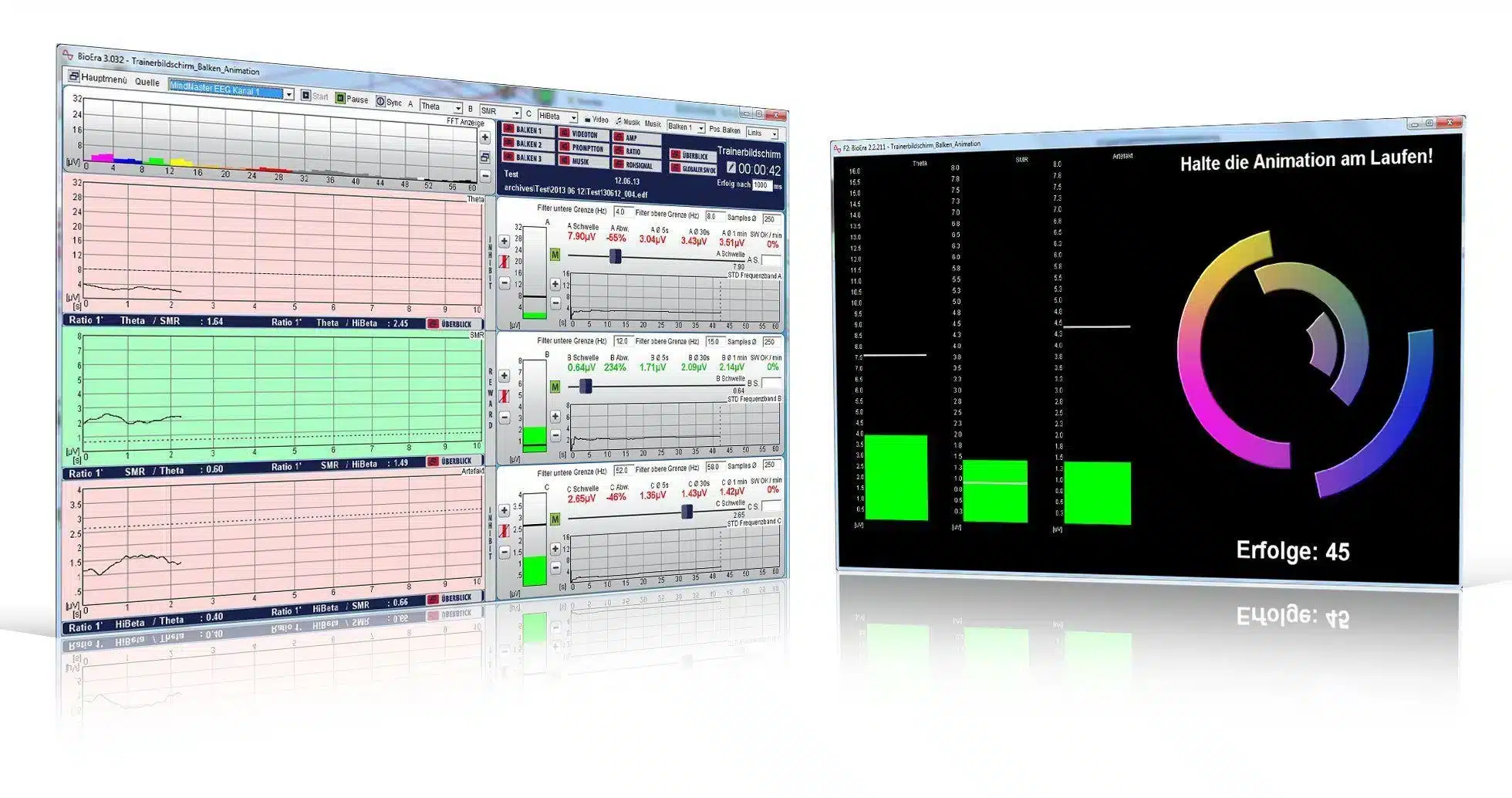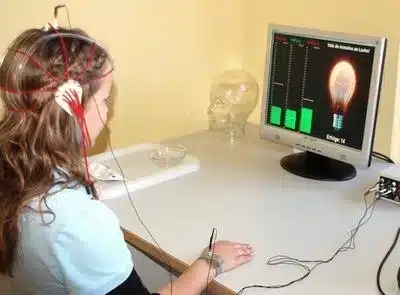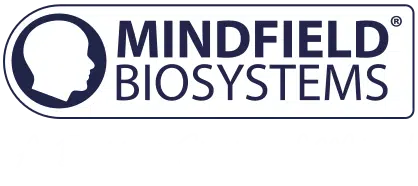Introduction to Neurofeedback
What is Neurofeedback?
Neurofeedback is a scientifically based method for measuring and improving brain activity which is used all over the world. It is based on the latest neurological research, which shows how certain patterns of behavior can be explained by a particular set of brain wave patterns.
Brain activity, imperceptible under normal circumstamnces, can be made visible by the use of measuring instruments.
Computer supported Neurofeedback trains various functions of the human brain on the basis of electric brain activity measured by an EEG (Electroencephalogram).
What is Neurofeedback used for?
The goal is to optimise brain activity in order to positively and sustainably influence cognition, attention, behaviour and wellbeing.

How does Neurofeedback work?
In a session, three to five electrodes are attached to the subject’s head to record the brain waves. The results can be viewed on a computer monitor. The subject watches various animations, which visually and/or audibly display positive changes in brain activity in real time.
The client can use this information to learn to acheive this improved cognitive functioning more quickly and sustainably. No electrical impulses are transmitted to the brain, only the brain activity itself is measured.
Neurofeedback is based on elements of operant and classical conditioning.
How long does a session take?
Sessions take about 60 minutes.
How Many Sessions Are Needed?
Generally 20-40 sessions will be required. Training can be terminated on detection of a measurable improvement in electric brain activity associated with an improvement in the underlying problem.

Is the Training Painful or Uncomfortable?
As with blood pressure readings or ECG, the subject experiences no pain. Disconfort is a personal feeling which may vary between individuals. The vast majority of clients do not find the treatment uncomfortable.
Are there Side Effects?
No, there are no known side effects to date.
How long do the Effects of Neurofeedback Training Last?
Neurofeedback is a long term learning process, similar to learning to swim or ride a bike. The brain’s patterns of activity are improved sustainably. Detailed studies clearly show continued benefits 6 months after training.
(e.g..: AD(H)S and Neurofeedback, Dissertation: Ulrike Leins, Tübingen, 2004)
An example of neurofeedback software used

What is the minimum age for Neurofeedback Training?
There is no strict lower age limit. The current norm takes the beginning of primary school as a minimum, but it can also be tried with younger children on an individual basis. There is no upper age limit. Older people with weakening cognitive abilities are among those who have the most to gain from neurofeedback.
Does it Make Sense to Start Neurofeedback Training as an Adult?
Working on one’s ability to concentrate can be particularly useful for adults. There are studies which show an improvement in learning and memory associated with neurofeedback.
(e.g.: Angelakis et al., 2007, Gruzelier et al., 2006)
A typical example of a neurofeedback training session with a child.


